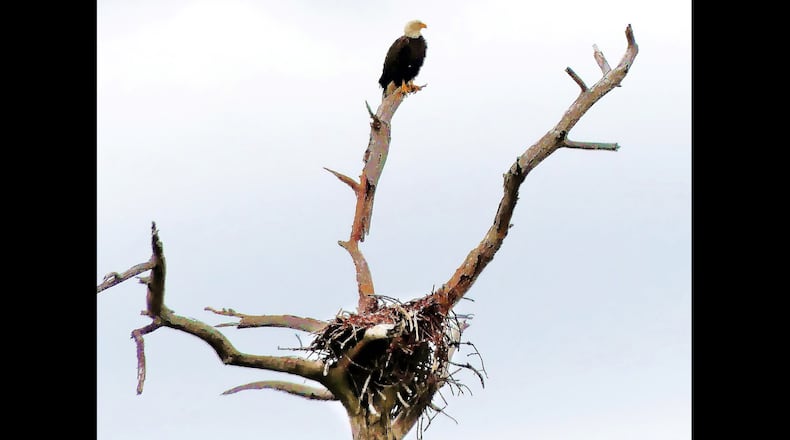Several of us Georgia Audubon members ventured a little far afield earlier this month in our occasional quests to see and enjoy birds in other birding hot spots outside the Peach State.
We spent three days in St. Marks National Wildlife Refuge and the nearby Wakulla Springs State Park in Florida’s Panhandle admiring their great avian diversity amidst some remarkable landscapes. In all, we saw an impressive 110 bird species.
Nearly all of those species also occur in Georgia, but we knew that we could reliably count on seeing a wide variety of birds in relatively large numbers at this time of year in the refuge and the state park.
For instance, we saw 15 species of over-wintering ducks, most of which amazingly were concentrated in a huge pond adjacent to the historic St. Marks Lighthouse. I saw more redhead and canvasback ducks in the pond than I’ve ever seen before in one place.
It was in another big pond at St. Marks where we saw the bird that collectively took our breaths away — a tall, neon-pink American flamingo, foraging in the mirror-smooth water among several drab-colored shorebirds. “I never get tired of seeing a flamingo,” said our co-leader Dottie Head. For some of us, it was the first flamingo we’ve seen in the wild.
At still another St. Marks pond was another awe-inspiring sight — huge, dense clusters of several shorebird species resting peacefully together on a large mudflat or feeding in the shallow water. Sanderlings, yellowlegs, marbled godwits, dunlins, dowitchers, willets, sandpipers, plovers, avocets and ruddy turnstones were among the shorebirds occupying the pond. Many of those birds soon will be heading to summer breeding grounds as far north as the Arctic.
Other memorable sightings: A bald eagle guarding its huge nest in a tall snag by a marsh; fleeting glimpses of a Henslow’s sparrow, one of the most elusive of birds, in a grassy field; a Northern harrier soaring low over a marsh; and three red-cockaded woodpeckers, an endangered species, landing near us in a tree.
“Those were my best looks ever of the woodpeckers,” said Melanie Furr, our other co-leader.
IN THE SKY: From David Dundee, Tellus Science Museum astronomer: The moon will be full next weekend. Mars, the only visible planet now, rises in the southwest at dusk and sets in the west a few hours later.
About the Author
Keep Reading
The Latest
Featured


